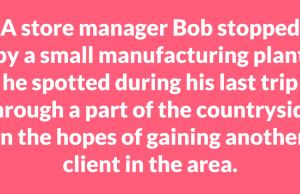As humans, we need oxygen to breathe. Too much oxygen can also cause a problem, but what happens to you when you don’t have enough oxygen in your body? Hypoxemia, in medical terms, occurs when your body lacks the correct amount of oxygen in order to function properly. Think you or someone you know might be showing symptoms of hypoxemia? Read on to find out.

1. EXPERIENCING FEELINGS OF DIZZINESS AND WEAKNESS
If you have noticed yourself getting dizzy or weak more often than normal the oxygen levels in your blood may be low. It is common to stand up too quickly and get dizzy as a result. This may happen daily for those who are suffering from low oxygen levels. Your blood needs oxygen to flow properly. Frequent dizziness and weakness are both signs that your blood isn’t getting the oxygen to all of the places within the body that needs oxygen to function.
2. FEELING TIRED
Being tired surfaces in a variety of ways. Fatigue that is connected to hypoxemia last for long periods of time or seems to never end. This is known as chronic fatigue. Some people commonly express feelings of tiredness way before the day is over. As a result, they opt to sleep more but the feelings of fatigue never go away. Getting tired sooner than normal is an indicator that the oxygen levels in your blood are low.
3. OUT OF BREATH
If you do not have enough oxygen in your blood, this could be one of the first symptoms to appear. When you do not have enough oxygen in your body, it can make it hard to breathe, which leads to shortness of breath. Dr. Steven Wahls tells Medical News Today, the most common causes of dyspnea (shortness of breath) are asthma, heart failure, chronic obstructive pulmonary disease (COPD). Shortness of breath can also occur in those who have anxiety or those who are stressed.
4. RAPID HEART RATE
Your heart may be working overtime to compensate for the low levels of oxygen, Inogen writes. Live Science states that the responsibility of the heart is to pump blood throughout the body as well as supplying oxygen and removing carbon dioxide from the body. When your body alerts itself that it does not have a lot of oxygen, your heart will work overtime to try and dish out more oxygen to stabilize the body.
5. SYMPTOMS OF ANXIETY
When your heart is beating fast and you don’t know why, you may be anxious about something. If you aren’t prone to feeling symptoms of anxiety, this could instead be a result of low oxygen levels within the bloodstream. If your blood lacks the right level of oxygen, your heart will work overtime to disperse the oxygen throughout your body to areas in need.

6. EXPERIENCING CONFUSION AND HEAD PAINS
Ever get a pounding head after holding your breath? Many people experience headaches, and they can vary in severity.
By themselves, headaches aren’t a worrying sign of lack of oxygen in the blood. But paired with confusion, dizziness, and a lack of coordination, headaches can be a sign that your body isn’t circulating the amount of oxygen that it needs. Some people report feeling faint.
“Your brain needs a certain amount of blood flow and oxygen to run efficiently, and for us to feel healthy, and if that mechanism is damaged, your brain knows other ways to generate the pressure that it needs,” says Dr. Patrick M. Nemechek
When your blood lacks oxygen, it can be challenging to concentrate and coordinate your body, leading to headaches and confusion.
“Without enough oxygen in the lungs, the organs cannot function properly. As a result, toxins accumulate in the bloodstream, and vascular headaches ensue. This happens because low oxygen levels initiate the widening of blood vessels and bring on migraines,” says Dr. Mark Wiley.
A lack of oxygen in the blood can cause concern because it often precipitates or stems from other diseases or illnesses. If you have any of these symptoms, see your family physician receive a diagnosis. These red flags may indicate other health concerns that need medical attention.
How Exactly Is Hypoxemia Treated?
Tests
Going to the doctor and getting tests done to determine how much oxygen is in your blood is the first step to getting the issue treated. The doctor will run a series of tests to see how much oxygen is in your blood, and then test for the common causes of low oxygen levels.
Your doctor will then treat those problems, whatever they may be. Your heart, for example, may need help pumping correctly and may need medicine to pump better and get your oxygen circulating.
Nasal cannula
Hypoxemia that isn’t very severe can be treated through a portable oxygen mask or nasal cannula, which is a thin tube with two separate openings that sit just inside your nostrils. This will pump oxygen into your body and allow more oxygen to circulate through your blood. This is a short-term treatment that is used to get your oxygen levels up.
Regular oxygen use
When the level of oxygen in the blood is severely low, a doctor will often prescribe regular and long-term oxygen use. Depending on the severity of the oxygen levels in your blood, your doctor may have you use oxygen daily, overnight, or periodically throughout your day.
REFERENCES: womenworking.com, apost.com, powerofpositivity.com, keepyourbody.com


















